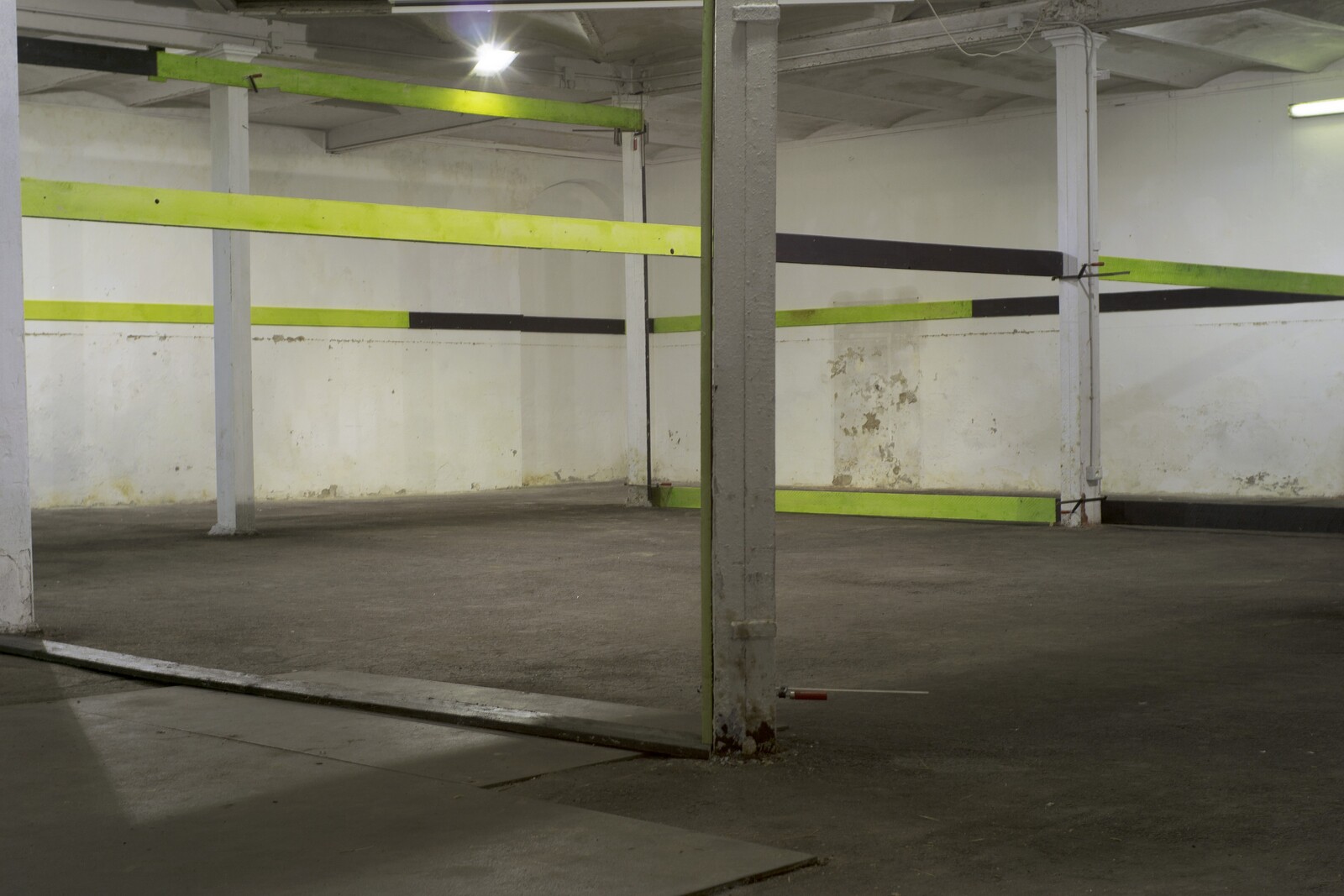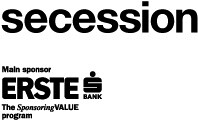The Secession Knot (5.1)
April 6–June 18, 2017
Spacelength Thought
April 6–June 25, 2017
The Visible Spectrum
April 6–June 25, 2017
Friedrichstraße 12
1010 Vienna
Austria
Hours: Tuesday–Sunday 10am–6pm
T +43 1 587530710
F +43 1 587530734
presse@secession.at
Jean-Luc Moulène: The Secession Knot (5.1)
The Secession Knot (5.1) is a site-specific intervention by Jean-Luc Moulène. Timber panels painted pitch black and neon yellow form a “knot in space” that engages the architecture in dialogue while establishing “spaces” with different qualities in which Moulène presents additional works. Most of these objects were conceived specifically for the Secession and relate to the overpainted newspaper images Brèves from his artist’s book to be published in conjunction with the exhibition.
The knot—its mathematical function as well as its symbolic significance—has been an ongoing interest in Moulène’s art. He translates knot theory, a mathematical system for the description of intricate situations, into art in an effort to deal with its complexity. As he sees it, the art field, far from being peaceful, is a zone of conflict: any work of art implies a “yes” and a “no,” and the beholder is challenged to define his or her own position.
Jean-Luc Moulène, born in 1955 in Reims, lives and works in Paris.
Curator: Bettina Spörr
Rosa Barba: Spacelength Thought
The work of the German-Italian artist Rosa Barba can be read against the background of an expanded notion of sculpture. In addition to issues of composition, the physicality of form and plasticity, time plays a central role. This aspect, combined with her interest in how film articulates space, sets work and viewer in a new relationship that is also mirrored in the content of her films. Each one is a topographical study of the modern unconscious. They are spaces of memory and uncertainty, which can be read as a reassuring myth despite the instability of the reality they depict. Barba’s filmic works alternate between experimental documentary film and fictional narratives and are not clearly fixed in time. They frequently focus on natural landscapes and human interventions in the environment and examine the relationship between historical records, personal anecdotes and filmic depictions.
In her solo exhibition Spacelength Thought at the Secession, Rosa Barba will present a selection of films, which more or less deal with the notion of archiving, as well as some of her sculptural works. Next to the 35mm film The Hidden Conference: About the Shelve and Mantel, 2015, a filmic investigation into the museum storage of the Tate in London that questions the status of art when it is not on display and draws an imaginary conversation between the art works, also two new film works will be on show: Enigmatic Whisper, 2017, a poetic portrait of one of Alexander Calder’s kinematic sculptures in his studio, and Disseminate and Hold, 2016, that explores São Paulo’s Minhocão, a 3.5-kilometer concrete overpass from the 1970s, unfolding a dialogue between its historical, contemporary and imaginary impact on the city.
As always in Barba’s film works, imagery and audio are treated equally. Taking this into account, the Secession will release a 12-inch record with the soundscape of her latest film, Enigmatic Whisper. Barba’s record will come with issue #17 of her edition series Printed Cinema that functions as a kind of secondary literature to her films, and that the artist has been publishing since 2004.
Rosa Barba lives and works in Berlin.
Curator: Jeanette Pacher
Anoka Faruqee: The Visible Spectrum
The abstract paintings of US American artist Anoka Faruqee are characterised by pulsating optical and chromatic effects. Patterns and motifs recur in her pictures as she adjusts and permutates them in apparently infinite variations in order to plumb the laws of painting.
At the Secession—her first institutional solo show in Europe—Faruqee will show a range of her recent Moiré Paintings, Circle Paintings, and Wave Paintings. Critical to her systematic engagement is that she does not deal with pattern as superficial decoration but as a physical structure built up of modular forms and colors. Her paintings are created with notched tools raked through wet paint, in a range of gestures, from freehand to control. As to that the artist states: “Translations between the theoretical and tangible, between the virtual and physical, are central to my work. These would be very different paintings if there were no excess, no errata, or no corruption. These interruptions read simultaneously as painterly gesture, material accident, and electro-magnetic corruption, crucially animating my paintings.”
Anoka Faruqee, born in 1972 in Ann Arbor (Michigan, USA), lives and works in New Haven (Connecticut, USA).
Curator: Annette Südbeck
The exhibition program is conceived by the board of the Secession.

